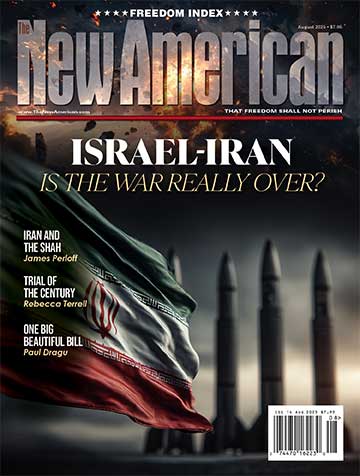The National Transportation Safety Board (NTSB) reports that the Amtrak train that derailed on Monday on its way to Portland from Seattle was going 80 mph on a 30 mph track. Sadly, Amtrak derailments are not particularly unusual and the transportation system has long been known for its incompetence and “weak safety culture,” which brings up the question, why does the government continue to subsidize Amtrak?
Three people were killed in Monday’s train derailment and more than 100 were injured when one of two engines and 12 cars derailed, tumbling the cars onto a busy interstate highway below. The train had been making its inaugural run on a 14.5 mile stretch of refurbished track, the Washington Post reports. If an automatic braking system had been operating, the train would have been slowed down before reaching the curve where it derailed.
This is the second time in two years that an Amtrak train derailed because it was traveling at twice the speed limit. In May 2015, a train bound for New York derailed in Philadelphia after going 106 mph where the speed was restricted to 50 mph.
A quick Internet search reveals that Amtrak has had its fair share of accidents and derailments since its inception in 1971. The NTSB contends Amtrak has a “weak safety culture” in which employees frequently take shortcuts and put on-time performance over safety.
Meanwhile, Amtrak has run operating losses every year since it began operating. Why would a failing for-profit organization remain in business despite decades of ineptitude and financial loss? That’s easy — because the federal government has been willing to give Amtrak over $45 billion in subsidies over the last 46 years.
Officially known as the National Railroad Passenger Corporation, Amtrak has long been criticized for its inefficiency and incompetence and is considered a general government-subsidized failure. Passenger trains lease their lines from freight carriers, many of which now transport crude oil, which means delays are frequent. Tracks have rotted so badly that they collapse under the weight of stationary trains known as “standing derailment.”
And its congressional-approved annual budget is barely enough to pay for the maintenance and improvements that the system so desperately needs. Like other money from the federal government, the subsidies come with operational mandates that ensure Amtrak remains unprofitable. Amtrak is burdened with having to keep long-haul trains running across the country, including areas of lower density and further flung cities. While long distance routes account for approximately 15 percent of Amtrak passengers, they also account for 41 percent of the costs.
The long-haul trains are not the only factor in the company’s excessive losses. In a 2012 congressional hearing, Representative John Mica (R-Fla.) argued that a $9 cheeseburger sold on Amtrak actually costs $16 when factoring in the services’ operating expenses. A 2013 Inspector General report found that employee-pass riders who are offered free trips on Amtrak also received complimentary meals, resulting in a $240,000 loss for the railroad in 2012.
Sadly, any profits Amtrak earns on its more successful routes are used to sustain money-losing routes rather than investing in much-needed updates such as modern systems of signaling and automation that could have prevented Monday’s derailment.
Anthony Haswell, founder of the National Association of Railroad Passengers and the man widely recognized as the inspiration for Amtrak, had high hopes for the project. Forty-six years later, however, the embarrassment and inefficiencies of the endeavor have been impossible to ignore, prompting Haswell to write the following piece on Amtrak:
Amtrak is a massive failure because it’s wedded to a failed paradigm. It runs trains that serve political purposes as opposed to being responsive to the marketplace. America needs passenger trains in selected areas, but it doesn‘t need Amtrak’s antiquated route system, poor service and unreasonable operating deficits.
Like all things related to the federal government, Amtrak became beholden to politics, even though it meant destroying any hope for fiscal responsibility. Conservative pundit Glenn Beck addressed the politics of Amtrak in his book Arguing With Idiots:
Pricing is dictated by politics. The Sunset Limited takes 47.5 hours to make the trip from L.A. to The Big Easy. Does anyone else see a problem with charging $133 for 47.5 hours? Here’s a hint: That’s a rate of $2.80 per hour!
The only reason the Sunset Limited route is still in existence is politics. Amtrak needs subsidies to stay in business, those subsidies have to be approved by Congress; therefore, Amtrak needs to keep certain politicians happy … like for instance, keeping a money-losing route open in exchange for votes from the politicians who represent the districts that the train runs through.
As a result of such bad decisions, Amtrak continually operates at a loss. In 2010 alone, Amtrak earned approximately $2.5 billion in revenue, but spent nearly $4 billion. Since its inception, Amtrak has cost the government approximately $50 billion.
Until Amtrak gets its act together and pulls itself off of the government’s feeding tube, it will likely continue to experience accidents and pose a major risk to passengers and bystanders alike, all at a financial loss paid for by the taxpayers.
Photo of Amtrak train derailment: AP Images





